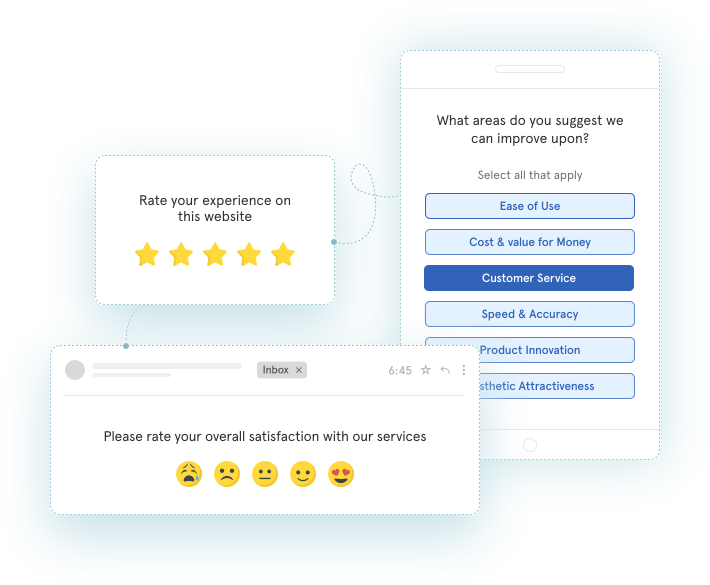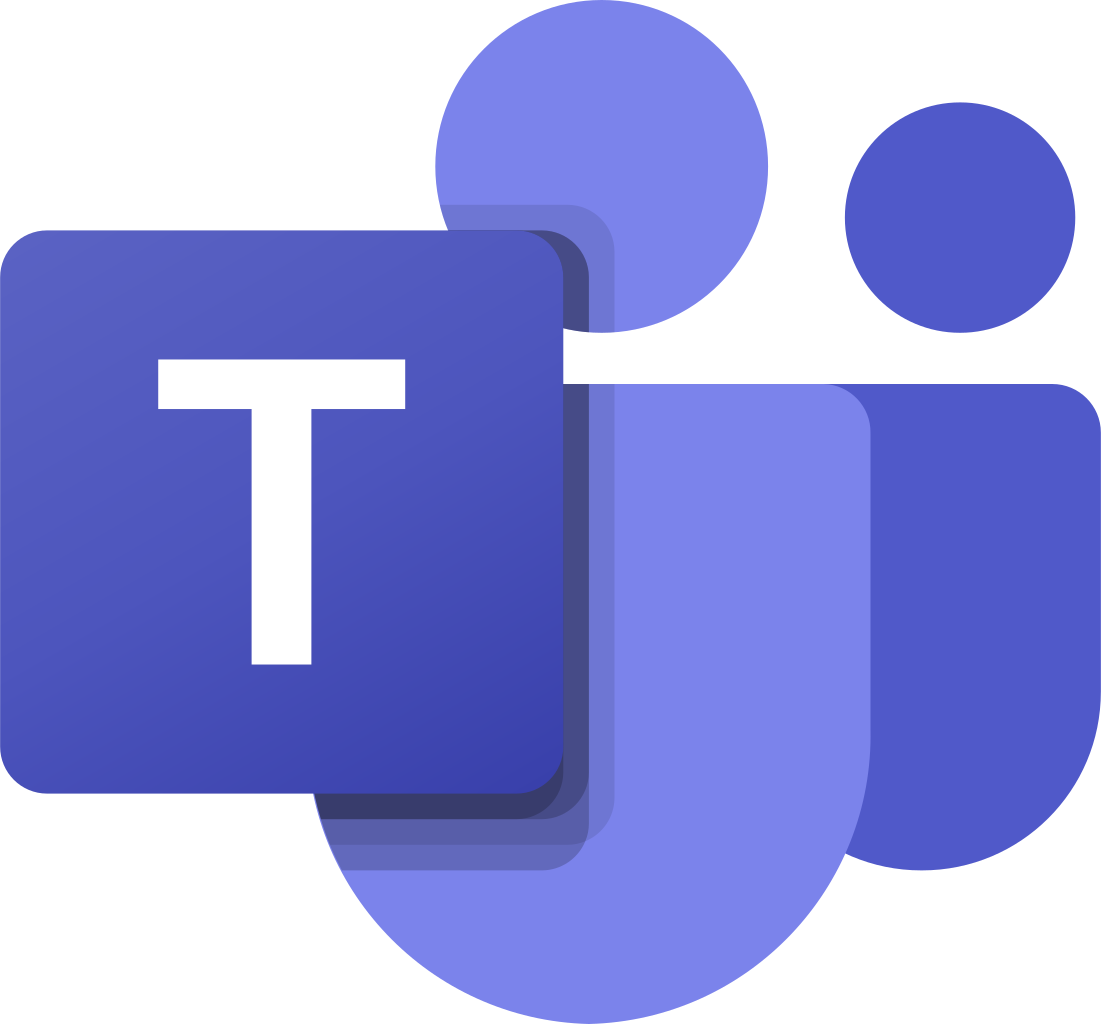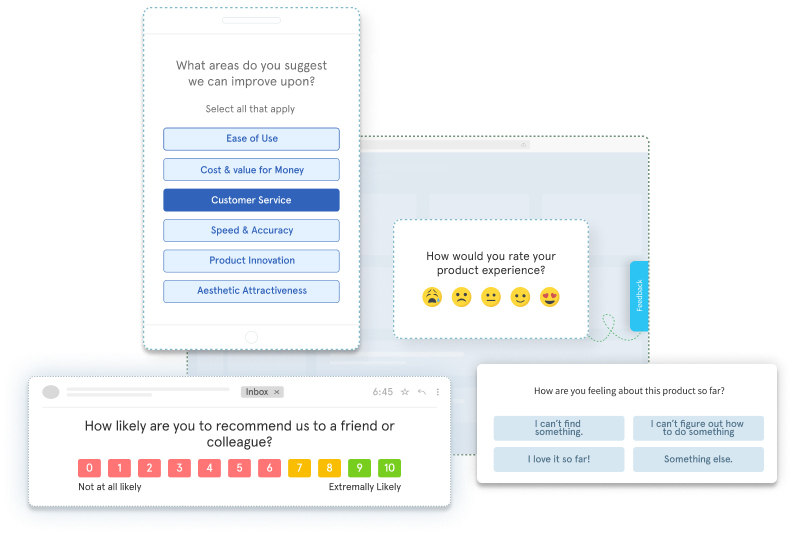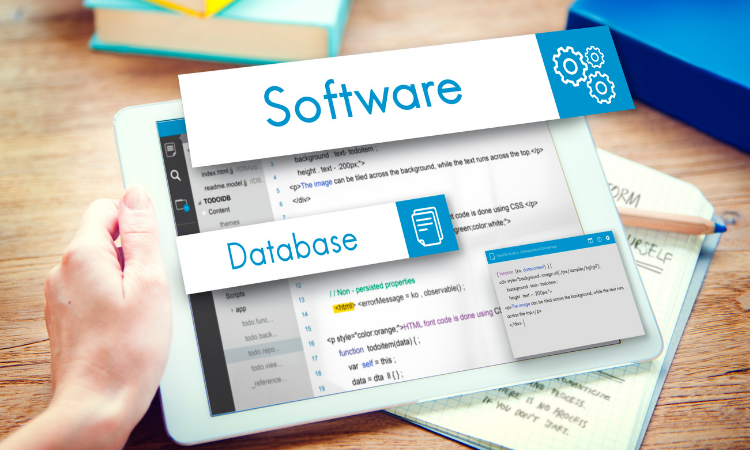Understanding customer needs and preferences has always been at the core of successful businesses. Voice of Customers plays a crucial role in collecting customer feedback, understanding their needs, and expectations, and working in the direction of fulfilling them.
In today’s dynamic marketplace, where customer expectations are constantly evolving, VoC Analytics serves as a compass guiding businesses towards customer-centricity analyzing feedback from sources like customer feedback surveys, online reviews, and social media. By harnessing advanced technologies like natural language processing and sentiment analysis, VoC Analytics offers invaluable opportunities to enhance customer experiences and drive competitive advantage.
In this guide, we will take you through the process of VoC analytics including collecting, analyzing, and applying customer insights, to ensure you’re equipped to make data-driven decisions that resonate with your audience and bolster your brand. Let’s get started!
TL;DR
- Voice of Customers plays a crucial role in collecting customer feedback, understanding their needs, and expectations, and working in the direction of fulfilling them to build amazing customer experiences.
- Voice of Customer (VoC) analytics provides businesses with crucial insights into customer experiences, enabling the improvement of products, services, and overall customer satisfaction, leading to increased loyalty and competitive differentiation.
-
Effective VoC strategy entails comprehensive collection of customer feedback through surveys, social media monitoring, and customer service interactions, followed by employing advanced analytics methods such as sentiment analysis and natural language processing for actionable insights.
-
To harness VoC effectively, you should leverage sophisticated analytics tools with features like real-time insights, sentiment analysis, and visualization dashboards, and continuously apply these insights to refine customer experiences and business strategies.
-
Zonka Feedback is an effective VoC tool that you can use for this purpose. It helps you create and share customer surveys to collect feedback, listen to the voice of customers, and implement changes to improve customer experience and satisfaction. It also offers a free trial for 14 days.
Hear the Voice of Every Customer🔊
With VoC Surveys, reach your customers wherever they are and capture their feedback. Leverage customer feedback to boost customer experience.

Understanding Voice of Customer Analytics
VoC analytics is an all-encompassing practice that involves:
-
Gathering and analyzing data about customers to understand their perspectives on a brand, product, or service
-
Listening to and identifying customer needs
-
Actioning insights
-
Iterating the process for ongoing improvement
When applied effectively, VoC analytics can reveal the true status of customer experiences, differentiating your brand and fostering a loyal customer base.
Businesses can utilize VoC analytics to:
-
Gather actionable insights and customer feedback
-
Make better-informed decisions to meet customer expectations and improve products or services
-
Improve customer satisfaction
-
Enhance customer loyalty
-
Achieve overall business success
VoC analytics is the cornerstone for achieving a successful voice in these goals.
The role of VoC in business success
In a highly competitive market, giving priority to VoC is key for businesses striving to deliver superb customer experiences, foster brand loyalty, and gain a competitive edge. A customer strategy grounded in VoC analytics builds trust, loyalty, and long-term relationships, contributing immensely to customer retention.
VoC analytics can help businesses in various ways, including:
-
Identifying the strengths in current customer relationships
-
Pointing out growth opportunities
-
Identifying efficiencies in processes
-
Finding avenues for product optimization
-
Identifying potential churn
-
Discovering suitable candidates for referral campaigns
-
Pinpointing opportunities for upselling or cross-selling
Performing customer analysis by examining customer feedback is a valuable tool for businesses to improve their overall performance and increase customer satisfaction.
Ultimately, the implementation of VoC efforts can lead to improved business performance, driving enhancements across marketing, sales, product development, and support strategies.
Key components of VoC analytics
An effective VoC program involves key components that encompass data collection, analysis, and taking action based on derived insights. Analytics in a successful VoC program provide the raw data necessary for understanding customer behavior, while insights help interpret what drives that behavior.
The process of synthesizing VoC feedback includes identifying, tracking, and analyzing key metrics to recognize trends and generate actionable insights for organizational decision-making. To ensure that the feedback gathered serves the intended strategies and processes, establishing clear business goals for VoC data collection is critical.
Collecting Valuable Customer Feedback
Accumulating and utilizing ways to collect customer feedback is a vital step in the VoC analytics process. It involves gathering direct customer feedback from various touchpoints, such as:
-
emails
-
Customer reviews
-
social media channels
A unified VoC solution that gathers information across channels can help identify customer pain points throughout their journey, and establishing a process for feedback collection allows for continuous improvement and the tracking of emerging trends and themes.
Consistently accumulating customer feedback via surveys, customer reviews, and social media listening is integral for obtaining holistic insights. Effective customer surveys should include targeted VoC questions relevant to the customer’s experience to provoke actionable insights, and these surveys should incorporate both quantitative customer satisfaction metrics like NPS, CSAT, and CES, and qualitative inputs through open-ended questions for a more complete feedback picture.
1. VoC Surveys and questionnaires
Voice of Customer Surveys and questionnaires serve as potent instruments for gathering VoC data. They can be optimized by including both quantitative metrics and open-ended questions, enabling a more complete collection of data. Regular review and update of survey questions ensure their effectiveness, and providing incentives or discounts can motivate customers to complete surveys, leading to a larger volume of data for analysis.
Voice of Customer survey tools offer various features including:
-
Ready-to-use customizable VoC survey Templates
-
Drag-and-drop editors
-
Advanced reporting and analytics
These features enable efficient feedback collection. Companies like Bank of America and Walmart have implemented survey strategies to gain timely insights and inform customer experience improvements, demonstrating the real-world application and impact of well-executed surveys.

2. Social media monitoring
Social media has surfaced as a potent platform for comprehending customer sentiment. It includes tracking brand mentions, product or service discussions in groups, and analyzing comments on posts. Aggregated social data from various social media platforms allows for a clearer picture of brand perception and customer experiences.
Utilizing social media listening and analyzing non-survey data like online reviews can offer additional insights, contributing to a comprehensive view of customer sentiment. You can engage directly with customers through social media, responding to specific comments and preferences, thus capturing the voice of the customer in real time. However, it’s important to consider the possible bias in social media feedback, as more vocal or dissatisfied customers are more likely to express their opinions.
3. Customer service interactions
Customer service interactions offer a plethora of data for VoC analytics. It’s particularly important to analyze customer service interactions for industries such as telecommunications, retail, or banking, due to their extensive engagement in customer service. Analyzing channels like sales calls, emails, and live chats can reveal customer needs and provide feedback on the customer service experience.
Regular analysis of customer feedback about customer service interactions is key to identifying trends and areas for improvement in the customer experience, while sharing these insights with the team ensures alignment towards enhancing service delivery. The rise of AI chatbots and virtual assistants, empowered by natural language processing, are increasingly utilized in customer service to effectively understand and respond to customer queries, enhancing satisfaction and reducing costs.
 Analyzing VoC Data for Actionable Insights
Analyzing VoC Data for Actionable Insights
Following the collection of customer feedback data, the subsequent step is its analysis. An AI-powered platform can help with the analysis of VoC data by:
-
Categorizing the data
-
Processing large amounts of data quickly for in-depth insights
-
Identifying themes, entities, and topics within customer feedback
-
Analyzing underlying sentiment trends
This analysis is vital for shaping strategy and making informed business decisions.
VoC tools convert customer sentiment into valuable data, informing about different business areas’ performance and influence on the bottom line. Unexpected insights, such as the discovery of significant pain points through negative sentiment analysis, can emerge from VoC analytics, prompting focused resolutions.
Finally, linking customer analytics with behavioral data, such as through funnel analysis, aids in pinpointing and smoothing out friction points for better customer experiences.
1. Sentiment analysis
Sentiment analysis assumes a vital role in VoC analytics. It is employed to discern the emotions and attitudes of customers towards products or services through the analysis of their feedback. By utilizing automated sentiment analysis, you can swiftly adjust your strategies in marketing, branding, or products based on customer sentiments derived from feedback.
Companies such as:
-
Nahdi Medical
-
Pena Global with AARP
-
Health-Links in Saudi Arabia
-
A Johannesburg bank
have successfully applied sentiment analysis to achieve profound insights into customer behavior and preferences. Even in crisis communication, sentiment analysis proves its value, as observed with an international automotive company that leveraged sentiment analysis to tailor public relations strategies to different regional markets’ perceptions.
2. Text analytics and Natural Language Processing
Employing Natural Language Processing (NLP) techniques to analyze unstructured customer feedback can assist businesses in revealing valuable insights. NLP techniques, including text classification, sentiment analysis, and entity recognition, help uncover insights from unstructured customer feedback, identifying the most significant constraints impacting customer experience and the root causes of trends over time.
Unstructured text feedback provides a more nuanced view of customer opinions, and with the help of text analytics tools, organizations can extract richer qualitative data that is not limited by structured survey formats. Insights gained from text analytics can be operationalized by:
-
Identifying common customer questions and sentiments from a variety of channels such as live chat logs
-
Integrating VoC insights from multiple touchpoints
-
Promptly addressing emerging customer trends
3. Visualizing data for better understanding
Visualization of VoC data with multi-channel analytics offers several benefits for organizations:
-
Consolidates understanding of customer needs across all platforms
-
Enables more knowledgeable decision-making
-
Provides real-time insight into customer feedback
-
Allows companies to quickly identify and act on emerging customer service issues
Customizable dashboards in VoC analytics help different business departments to easily access and utilize insights, fostering across-the-board improvements in customer satisfaction. Some benefits of customizable dashboards include:
-
Easy access to insights for different departments
-
Improved customer satisfaction
-
Data visualization to break down complex metrics
-
Informed business strategies around product, pricing, and marketing.
Transforming intricate VoC data into visually appealing reports is essential to make data accessible and actionable for stakeholders, who can better interpret and respond to the insights.
Implementing VoC Insights for Enhanced Customer Experience
Deriving actionable conclusions represents the crucial subsequent step following the collection and analysis of VoC data. Implementing VoC insights involves crafting a detailed action plan based on VoC insights to ensure the effective implementation of customer experience improvements. VoC insights inform continuous product development by highlighting direct customer needs and preferences. Through these insights, businesses can start moving toward enhancing overall customer experiences.
Personalized experiences targeted based on VoC data can lead to significant improvements in customer satisfaction. It is through the understanding and implementation of these insights that businesses can truly leverage the power of VoC analytics to deliver the ultimate customer experience.
1. Prioritizing customer pain points
To enhance customer experience, it’s pivotal to:
-
Identify areas where customers encounter hurdles in their journey
-
Acknowledge recurrent issues
-
Categorize customer feedback to identify common issues
-
Use this information to inform product enhancement strategies.
Visualizing analytics of customer service can highlight necessary operational changes, like adding call center agents or adopting new technologies. Feedback from VoC analytics can directly influence product and service development by highlighting improvements, feature requests, and opportunities to refine offerings.
When customers indicate concerns about pricing being too high or product quality being subpar compared to competitors, a reassessment of these factors can lead to necessary improvements.
2. Personalizing customer interactions
By implementing VoC techniques, you can polish your communication strategies like live chat to address customer concerns more effectively in real time. VoC data can be used to segment customers for personalized email campaigns, leading to more targeted and effective marketing efforts.
Detailed customer profiles for personalized marketing and product experiences can be created using NLP-driven customer segmentation from customer data, such as text data. Companies like Amazon have used customer interaction data such as purchases and product views to personalize recommendations, contributing significantly to annual sales.
Additionally, personalizing surveys based on user segmentation can significantly improve response rates and the quality of feedback collected.
3. Continuously measuring and refining
The persistent integration of VoC data and its analysis facilitates continuous refinement of the customer experience, driven by actionable insights from customer interactions. Creating a feedback loop from customer service data can provide ongoing insights into customer preferences and behavior.
To ensure continuous improvement, companies should regularly assess and adjust their VoC program strategies, staying responsive to changing customer needs. Monitoring and engaging with online customer reviews helps understand customer sentiment and influences word-of-mouth recommendations.
The benefits of VoC programs are felt by customers almost immediately, and communicating ongoing improvements to them is essential for long-term success.
Choosing the Right VoC Analytics Tools
Breakthrough technologies like generative AI have simplified the collection and analysis of VoC analytics, thus broadening the scope for improving customer experiences. VoC analytics tools like Zonka Feedback offer diverse features ranging from multi-channel feedback collection, real-time survey data, to automated analysis and reporting, catering to various business sizes and integration needs.
You should consider asking critical questions when evaluating potential VoC tools to ensure they meet business objectives, such as adaptability, integration capabilities, and the level of actionable insights provided. Pricing models and costs for VoC analytics tools vary, making financial consideration an essential part of the selection process.
Features to consider
VoC analytics tools are required to possess sophisticated reporting capabilities to offer valuable insights for strategic decision-making. Real-time insights from a wide range of sources are essential features that enhance the responsiveness and relevance of VoC analytics.
Sentiment analysis is a critical function within VoC tools, particularly for B2B SaaS companies where industry-specific models offer increased accuracy as more data is processed over time. These features not only help collect and analyze VoC data but also aid in deriving actionable insights from it.
Top VoC analytics tools
The popularity of VoC analytics tools has surged as businesses aim to enhance customer experience by examining feedback.
These tools, as part of a customer analytics program, can help businesses gain valuable customer insights from customer feedback and improve their overall customer experience through a well-designed customer program.
Effective VoC analytics tools cater to different business sizes and integration needs, offering varying features to suit a range of VoC analytics requirements.
Case Studies: Successful VoC Analytics Implementation
Several businesses have successfully leveraged VoC analytics to improve customer experiences and drive business success. Qumulo’s Customer Success Program, known as Qumulo Care, is one such example. The program harnesses customer feedback to provide personalized support and has been commended for its high net promoter scores within the storage industry.
Another company that has benefited from VoC analytics is Microsoft. The company has effectively used visual dashboards to decode customer satisfaction across various stages of the buyer’s journey. This has enabled the company to make informed decisions to enhance customer experiences.
Similarly, DoorDash introduced a ‘most liked’ tag in their in-app written reviews feature to surface popular menu items, a move driven by user feedback to improve the delivery service experience and restaurant selection process.
Conclusion
VoC analytics is a powerful way to understand your customers’ needs, expectations, and experiences. It involves collecting customer feedback, analyzing this data to derive actionable insights, and implementing these insights to enhance customer experiences. By prioritizing VoC analytics, you can deliver exceptional customer experiences, foster brand loyalty, and gain a competitive advantage.
Zonka Feedback is one of the most effective VoC tools that enables businesses stay responsive to changing customer needs and continuously refine their strategies to deliver the ultimate customer experience. Powered with advanced features, it helps you not only collect customer feedback and listen to the voice of customers, but also work on it to close the feedback loop and build better customer experiences.
It also offers a free trial. Try Zonka Feedback for free for 14 days and harness the power of VoC analytics to boost customer experience and ultimately grow your business.

 MS Teams
MS Teams












